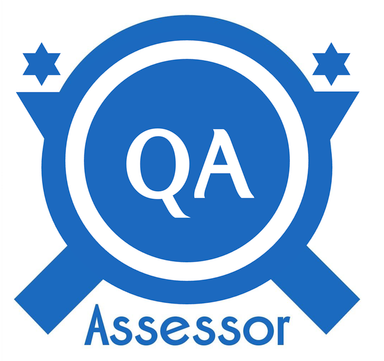What are the required Lead Auditor Competencies?
ISO 19011 sets out 5 headings in determining auditor competence:
- General: organizational knowledge, skills, and experience; working at a supervisory or managerial level is essential.
- Personal behavior: a range of personal attributes and professional behaviors are needed including ethical, open-minded, diplomatic, observant, perceptive, tenacious, decisive, culturally sensitive, ability to act with fortitude, etc.
- Knowledge and skills: to successfully complete an audit generic competence (incl. auditing skills) and a level of discipline and sector-specific knowledge and skills (i.e. of the applicable ISO Standard and of the economic sector being audited) are required.
- Achieving Auditor Competence: after ISO Auditor Certification, you can build experience by participating in a number of audits in the role of Team Auditor.
- Achieving audit team leader competence: with sufficient experience, being able to successfully lead an audit team and interact with the auditee and carry out the associated administrative tasks (audit findings, audit conclusion, audit report, etc.)

So, what are the steps involved in becoming a competent ISO Lead Auditor?
7-steps to ISO Lead Auditor Competency
Step 1: Satisfy yourself that you have the temperament and personal attributes needed to be a successful Lead Auditor.
Step 2: Check that you have the technical experience, subject expertise, and supervisory and managerial experience needed to conduct an audit.
Step 3: Complete an ISO Lead Auditor Certification Course – either a 5-day conventional course or a 30-hour online course.
Step 4: Undertake internal audits as often as possible – 3 times-a-year is considered the minimum needed to maintain auditing skills. But you need to do more.
Step 5: Approach one or more Certification Bodies requesting auditing work. Good technical and sectoral skills will open opportunities here. For example, you may initially be engaged as a Technical Expert to accompany an Audit Team. Or you may be asked to act as an Observer to build your on-the-job understanding of the CBs processes.
Step 6: Next comes working for a CB as a Team Auditor. CB’s processes require a minimum number of such audits before you are ready to progress.
Step 7: Finally, having been successfully evaluated by the CB as competent, you are asked to lead an Audit Team – you are the Lead Auditor.
More Information on auditing
For more in-depth information, we recommend you read ISO 19011:2018, especially:
- Part 7: Competence and evaluation of auditors, and
- Annex A: Additional guidance for auditors planning and conducting audits.
Useful Tips for Auditors
• Develop a plan to give value to the organisation and satisfy requirements of Accreditation Bodies.
• Plan to audit linked processes to explore synergies and “internal customer” issues.
• Audit plans should be developed with the auditee if possible.
• Available documented information should be reviewed before the audit to aid time allocation and understand sampling.
• Checklists can improve the quality of audits but understand how they can and design them to promote the quality of audits (Please, see ISO 9001 Auditing Practicing Group Guidance on: Checklist).
• Use the outcome of Stage 1 audit to plan the stage 2. It is strongly recommended to conduct Stage 1 audit at the client’s premises.
• Based on the outcome of Stage 1 or previous audits allocate more time to processes and/or areas with “higher risk”.
• Develop the plan around the processes – not the clauses of the standard.
• Linked processes are best planned to be audited together and by the same auditor so that the linkages and interdependencies can be explored in the audit.
• Arrange an interview with Top Management straight after opening meeting for evaluation of context of the organization, strategic direction, understanding of relevant interested parties and leadership.
• Conduct the audit of “internal audit” last.
• Consider whether aspects of a system where there is no standalone process can be audited as part of observation or interviews with auditees. If this approach is used, it is good policy to include, on the audit plan, a statement such as “The conformity to all relevant requirements of ISO 9001 will be verified during the audit of related processes”.
Protecting your workforce during this time
Workers may be exposed to hazards that put them at risk of infection. Even those who aren’t directly at risk from exposure may face new health and safety risks, such as the psychological impact of being isolated whilst working from home.
Every organization, large or small can act to assess, control and mitigate the risk from biological hazards such as COVID-19.
ISO 45001 Occupational Health and Safety Management System is designed to reduce the risks of work-related ill-health (and injury) and to provide safe and healthy work environments. It provides good practice in health and safety risk management, which, if implemented correctly, will help organizations protect their workers.
What are the different types of training and development for employees?
Some businesses may have several training programs, depending on their size, diversity and activities. The following is a list of the most common types of learning and development programs:
1. Orientation
Almost every company has an orientation program, which can be formal or informal. This is usually a one-time process for new employees and is usually conducted in your first week on the job. Typically conducted by the human resources department, an orientation program seeks to educate you on a wide range of topics, including:
- Corporate culture
- Company mission, vision, and values
- Organizational structure
- Leadership team
- Corporate policies
- Administrative procedures, such as computer logins and email setups
- New-hire paperwork
- Benefit plans
2. Onboarding
Orientation is usually part of a larger process called onboarding, a series of department-related training sessions that occur over an extended time. This process is specifically designed to quickly enable you to perform your role well. It typically starts immediately after you are hired and continues until you can work independently.
The leaders of a department prepare the onboarding program to focus on achieving the department’s goals and connecting them with the company’s objectives. Onboarding usually addresses these items:
- Your needs as a new employee
- Access to information and skills
- Technical aspects of the job
- Improvement of work performance
- Employee engagement
- Departmental goals
3. Technical skills development
Technical skills training is a basic component of employee education because it is a primary way for you to develop the skills you need in your role. Employees who are already competent in their jobs can undergo further training to gain new skills and stay current with the latest technologies and processes.
Some examples of technical skills that you can learn through this form of training include:
- Content writing
- Social media management
- Data analysis
- Coding
- Programming
4. Soft skills development
Employer will want to their employee to behave professionally and function well as part of a team. Soft skills refer to personality traits that enable to communicate and work cooperatively with co-workers and customers. These skills are useful for both new and old employees, and they play a vital role in building a respectful, collaborative and efficient culture within a company.
Examples of topics covered in soft skills training programs include:
- Communication
- Problem-solving
- Teamwork
- Presentation
- Leadership
- Time management
- Conflict resolution
- Work ethics
5. Products and services training
Products and services training may be a part of your onboarding program or a way for you to get reacquainted with your company’s offerings. Your employer may also use this training when they introduce new campaigns. This type of training provides information on different aspects of a product or service, such as:
- Options available
- Instructions for use
- Benefits
- Features
- Care and maintenance
- Price
- Warranty
6. Quality training
Quality training commonly occurs in production-focused companies. This method trains you to ensure that all products meet certain quality standards, which may be imposed by the company, industry or third parties. In some cases, employees who complete a quality training program will receive certification.
Quality training covers topics such as:
- Compliance with quality standards
- Quality control processes
- Product observation techniques
- Prevention and elimination of poor-quality products
- Evaluation and improvement of a production system
7. Safety training
Safety training protects you from work-related injuries, and it is especially important for companies that use toxic chemicals or other hazardous materials. This type of training also includes fire drills, evacuation plans and workplace violence procedures.
Examples of topics discussed in a safety training program include:
- Protective gear
- Safety best practices
- First aid
- Foodservice safety
- Construction safety
- Asbestos
8. Team training
The purpose of team training is to enable the members of a team to build stronger relationships with one another and work together cohesively. It empowers you to improve your decision-making, problem-solving and team-development processes to achieve better results for your organization.
Team training typically occurs following the restructuring of a company, merger or acquisition. In these situations, many employees will be working together for the first time, making team training an essential process.
Some of the topics that employers discuss in team training include:
- Improving communication
- Creating a positive work environment
- Improving team collaboration
- Increasing team productivity
- Establishing good relationships with teammates
- Identifying and leveraging the strengths of team members
- Keeping teammates motivated
Regardless of the type of workplace training you undergo, it is important to view the program as an opportunity for growth within the company. Do your best to take diligent notes, ask questions and contribute as needed. With an open mind and eagerness to learn, you may develop new key skills during your workplace training program.
- ISO 9001 Quality Management System
- ISO 14001 Environment Management System
- ISO 45001 Occupational Health and Safety Management System
- ISO 50001 Energy Management System
- ISO 27001 Information Security Management System
- ISO 22000 Food Safety Management System
- ISO 22301 Business Continuity Management Standards
- ISO 41001 Facility Management System
- ISO 13485 Medical Devices - Quality Management System
- ISO/TS 29001 Oil & Gas (API)
- IATF 16949 Automotive Quality Management System
- ISO 28000 Security Management System for the Supply Chain
- QMS 9001 Internal Auditor
- QMS 9001 Lead Auditor
- EMS 14001 Internal Auditor
- EMS 14001 Lead Auditor
- OHSMS 45001 Internal Auditor
- OHSMS 45001 Lead Auditor
- MD QMS 9001 Internal Auditor
- BCMS ISO 22301 Internal Auditor
- EnMS ISO 50001 Lead Auditor
- FSMS ISO 22000 Lead Auditor
- IATF 16949 Automotive QMS Lead Auditor
- ISMS ISO 27001 Internal Auditor
Copyright© 2023 - QA Assessor. All rights reserved.
We need your consent to load the translations
We use a third-party service to translate the website content that may collect data about your activity. Please review the details in the privacy policy and accept the service to view the translations.
